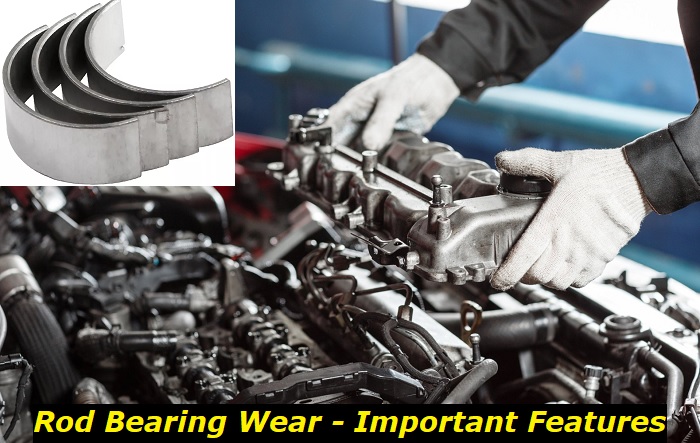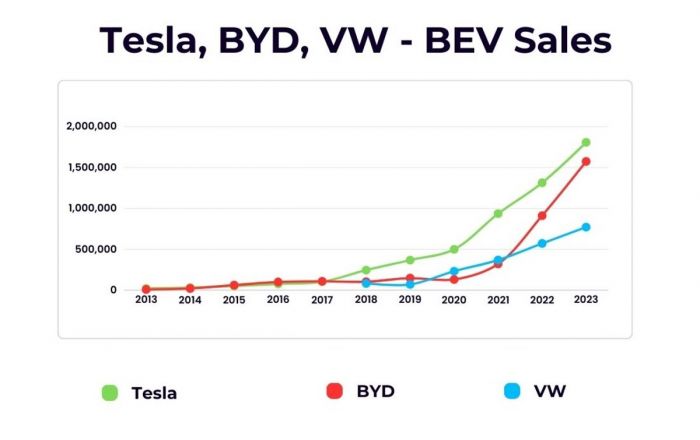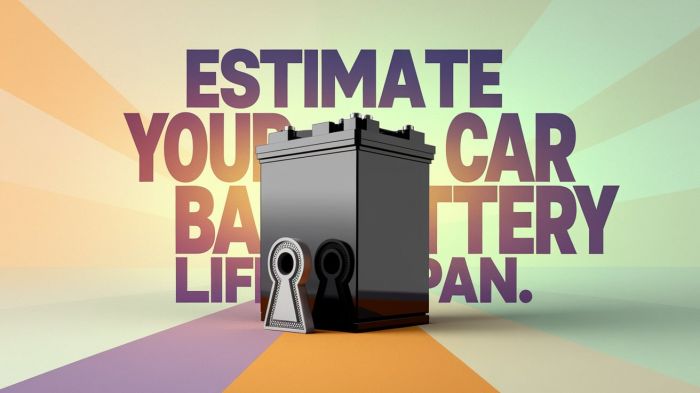Did you know that one of the leading causes of irredeemable engine damage is caused by bad bearings that result in the connecting rod to piece the crankcase? A lousy rod bearing could spell doom for your engine and render your car a write-off. If you are concerned about the wear and tear on your rod bearings, this article will arm you with all the necessary information.
Engine bearing problems highlights
- Level of importance:High
- Commonreasons:Overheating, low oil pressure
- DIY inspection:Almost impossible
- DIY repair:Impossible
- Price for repair:$1,000 - $3,500
- Can you drive?Usually, no
- Ways to fix:Engine will need complete overhaul if rod bearings are dead

Drivers who do not know how to recognize the signs of rod bearing wear and failure usually have to spend significant money fixing or replacing their engines. Read on to ensure you know how to take care of your rod bearing and recognize signs of failure before the situation becomes critical. The article includes the following:
- The function of rod bearings
- Causes of rod bearing wear
- How to prevent rod bearing wear
- Signs that your rod bearings may be failing
What is an Engine Rod Bearing?
A rod bearing has two semicircular shelves/halves commonly referred to as split sleeve bearings. These shelves keep the connecting rod and crankshaft in place. The top half of rod bearings usually contains a pinhole to keep the crankshaft lubricated so it can freely spin in the bearing without generating excess friction and heat. Your engine has a rod bearing for each connecting rod and piston assembly.
Your Rod Bearing's Job
You probably know your car is powered when gas explodes in the cylinders causing the pistons to move up and down. For your wheels to turn, the pistons' up-and-down motion must be converted into a rotational motion. Your connecting rod is attached to each crankshaft and piston. These two components have dynamic movements that create a danger of snapping.
This is where your rod bearings come into play. At the end of each connecting rod is a rod bearing attached to the crankshaft. The rod bearing ensures that the connecting rod can move your crankshaft without friction mounting between these parts.
Now that you know the essential rod played by rod bearings, you can probably divine why their damage wreaks such havoc on your vehicle's engine. Good maintenance ensures your rod bearings do not suffer from premature wear.
Causes of Rod Bearing Wear
The normal wear of your rod bearings is affected by various external factors. Experienced mechanics can diagnose the cause of your engine rod bearing failure by running a few tests. Auto-care enthusiasts and determined drivers can also achieve this at home using a rod-bearing failure troubleshooting guide.
- Your Rod Bearing is Clogged with Debris or Dirt
Dust, dirt, and debris inflict more harm on engines than they get credit for. As the foreign particles build up from negligible to significant levels, they cause severe damage to your rod bearing's surface.
All you need to do to ensure your rod bearings are not worn in this manner is to stick to a regular cleaning schedule. It also helps to visit licensed dealerships and reputable auto repair shops that will take crucial steps to protect your rod bearings.
Such measures include reinstalling the rod bearing on a clean surface, flushing the lubrication system when reassembling the engine, and checking for unwanted particles.
- Your Rod Bearing Lacks Sufficient Lubrication
All moving parts rely on the lubricant to ensure they do not wear each other down due to metal-on-metal friction. Insufficient lubrication is often behind rod bearing failure. The poor lubrication likely to accelerate the wear of your rod bearings could be due to a wide range of issues, including a defective oil pump, low oil levels, or an oil leak.
Drivers whose oil lines are clogged are likely to witness some rod bearings wearing out faster than others. Although this problem begins by affecting one rod bearing, it will eventually affect all your bearings. Drivers are advised to inspect their bearings and add lubricant if they notice a shining surface on the rod bearing's metal.
You should also keep an eye out for oil seal failures, blocked oil lines, and malfunctioning oil pumps. You can also have a professional auto repair expert inspect your car for possible improper rod bearing selection/installation.
- Your Rod Bearing Crush
The bearing crush is the extra material found in the housing when the halves are set. It is vital to hold the rod bearing's external diameter against your housing assembly by employing the recommended assembly torque.
The crush reduces the rod bearing's movement because it increases the contact sugar area with the housing bore. This process creates a heat transfer that, when excessive, could reduce your engine's consumption because it files down the cap.
- Your Rod Bearing Was Improperly Installed
After spending a fortune fixing your rod bearings, the last thing you want to hear is that maybe they are improperly installed. Do not pinch pennies when attending to your engine because it may cost you much more in the long run. Poor rod bearing installation will likely cause the bearing to wear out faster than projected.
Incorrect rod-bearing cap installation is also likely to cause poor lubrication and crankshaft-bearing failure. Ensure you visit a licensed dealership or certified mechanic even when seeking routine care and maintenance.
How to Slow Down Rod Bearing Wear and Prevent Failure
While you cannot entirely protect your rod bearing from wearing out, there are various steps you can take to ensure that yours has a prolonged lifespan - maybe longer than that predicted in the user manual. Proper maintenance is a simple and affordable way to ensure you do not suffer premature rod bearing failure.
One of the worst things about fixing rod bearings or replacing an engine (other than the dent on your bank account) is finding out that all of that happened due to reasons that are easy to avoid. All the methods listed below are aimed at preventing, slowing down, and discovering on time typical rod bearing problems before they take a toll on your engine.
Such problems include pitting, spalling, unusual wear patterns, lack of lubrication, environmental factors, corrosion, and bearing selection.
Nonetheless, here are several ways to reduce rod bearing wear.
1) Sufficient Lubrication for Rod Bearings
All the moving parts in your vehicle thirst for lubricant which ensures that contact surfaces are protected from the friction and heat generated by sliding and rolling. The film of oil decreases abrasion, heat, and friction from the metal-to-metal contact. Further, lubrication ensures that all your metals are well coated and protected from rust and corrosion which significantly reduces your rod bearings' lifespan.
It is critical that you use the type of grease recommended in your user manual for lubricating the bearings. Using a poor-quality lubricant will cause lubrication failure and eventually rod bearing failure. Likewise, do not use a lubricant that is contaminated with any foreign elements. Contaminated lubricants greatly hinder the effectiveness of rod bearings and hasten their normal wear and tear.
2) Reduce Material Fatigue on Your Rod Bearings
Your rod bearing undergoes material fatigue when it runs beyond the fatigue limit set out in your user manual. Material fatigue often occurs when there is excessive fuel detonation or oil clearance. Nonetheless, you can easily increase your rod bearing lifespan and prevent this problem by:
- Use fuel with a high octane number.
- Selecting a rod bearing material that boasts a high load capacity
- Repair or replace any distorted parts immediately
- Close the watch on the oil clearance
3) Prevent Environmental Damage to Your Rod Bearings
Environmental factors should not be forgotten when considering the shelf life of your rod bearings. These modest steps will help keep your rod bearings in pristine shape:
- Regular and proper cleaning to ensure that no dirt or dust build-up on the rod bearings
- Proper sealing techniques using special seals that do not score the shaft when keeping away water
- Insulating your bearing to handle current passage and electrolyte corrosion that may create putting on your rod bearing surface or create sparks.
Since you now know how to care for your bearings, we will list a few warning signs that indicate it is time to get a professional's help before the situation descends into an expensive nightmare.
Common Symptoms of Rod Bearing Failure
If your rod bearings are on the fritz, you are likely to notice one or a combination of these symptoms.
- A knocking noise from your engine
- A loss of oil pressure
- Noise from your transmission
- Worn-out transmission belts
- Copper shavings in your oil
- Silver sheen in your oil
The Average Cost of Replacing Rod Bearings
Your total bill will depend on the extent of the damage and your car's make and model. At times, rod bearing failure calls for a replacement of the bearings, crankshaft, pistons, connecting rods, camshaft bearings, and timing chains.
In such a case, it may be cheaper to purchase a new engine. If you caught the problem early and only need to repair or replace the bearings, you can expect to spend $2,500.
About the authors
The CarAraC research team is composed of seasoned auto mechanics and automotive industry professionals, including individuals with advanced degrees and certifications in their field. Our team members boast prestigious credentials, reflecting their extensive knowledge and skills. These qualifications include: IMI: Institute of the Motor Industry, ASE-Certified Master Automobile Technicians; Coventry University, Graduate of MA in Automotive Journalism; Politecnico di Torino, Italy, MS Automotive Engineering; Ss. Cyril and Methodius University in Skopje, Mechanical University in Skopje; TOC Automotive College; DHA Suffa University, Department of Mechanical Engineering






Add comment